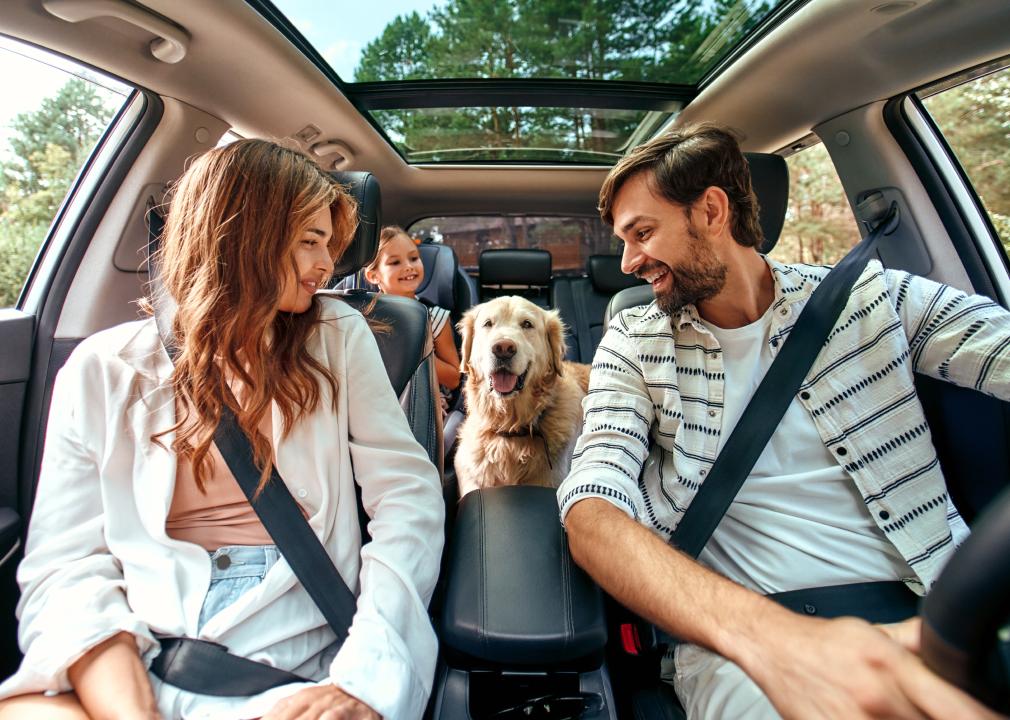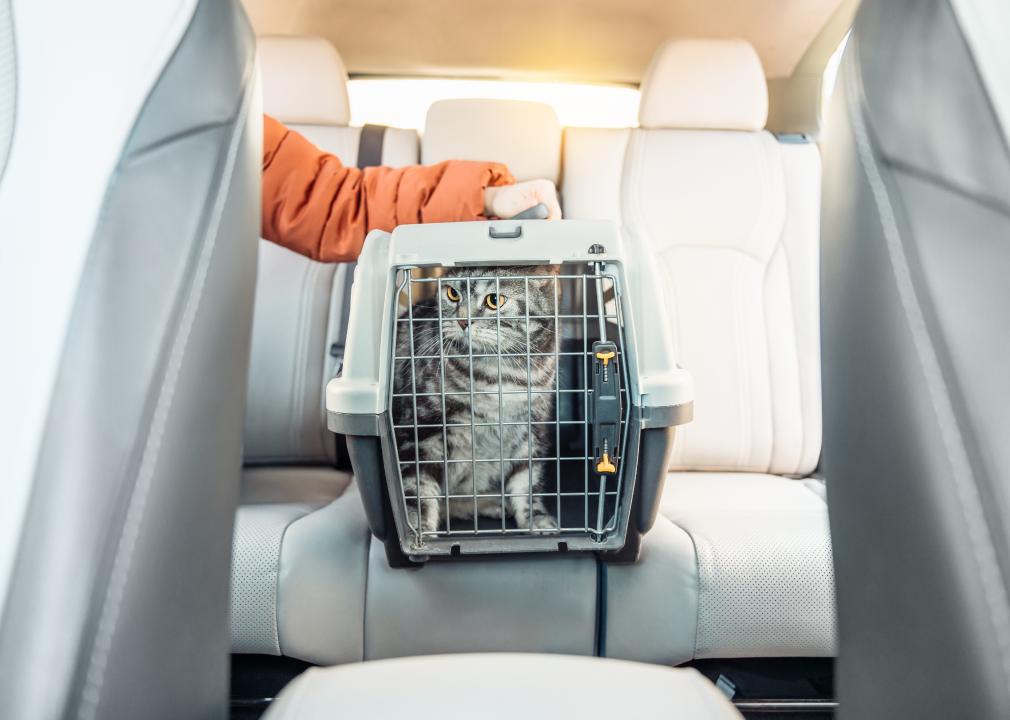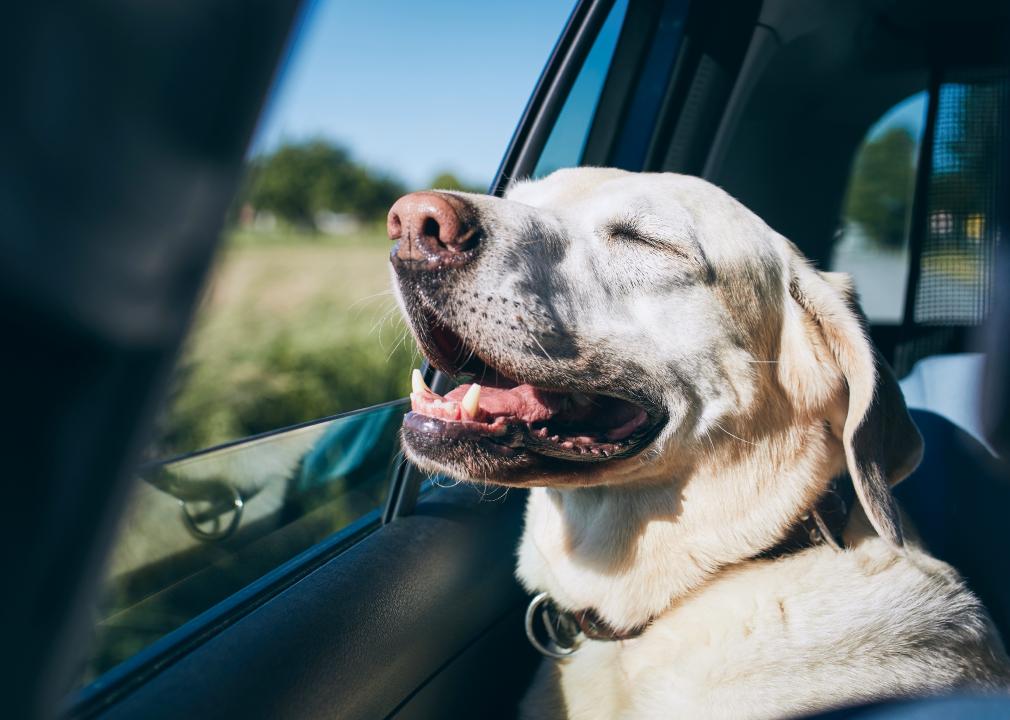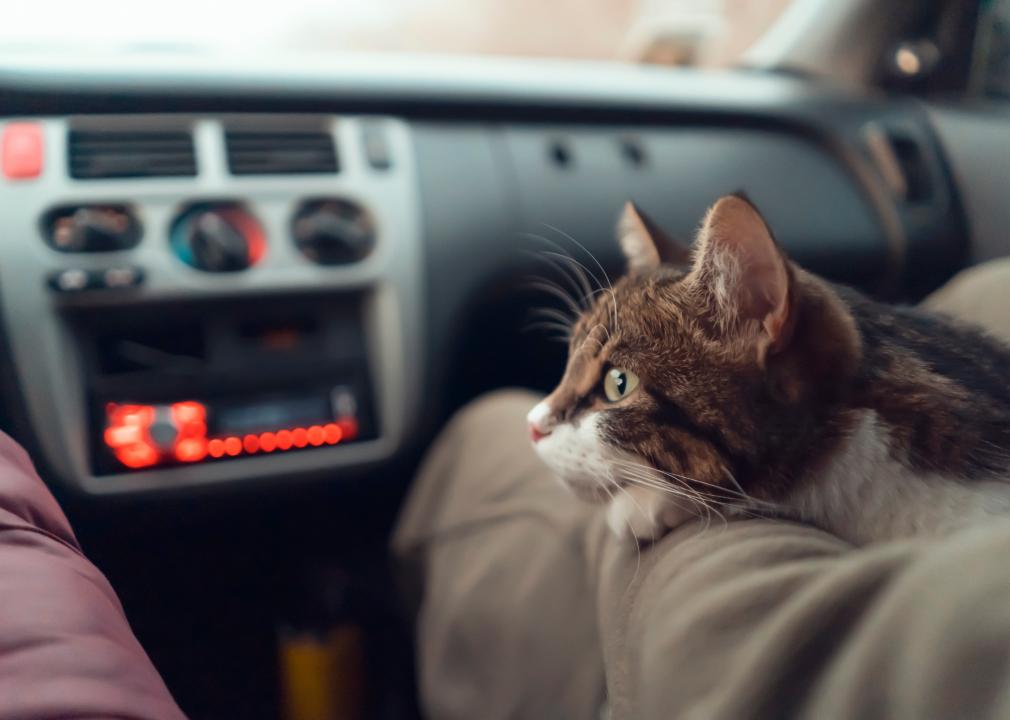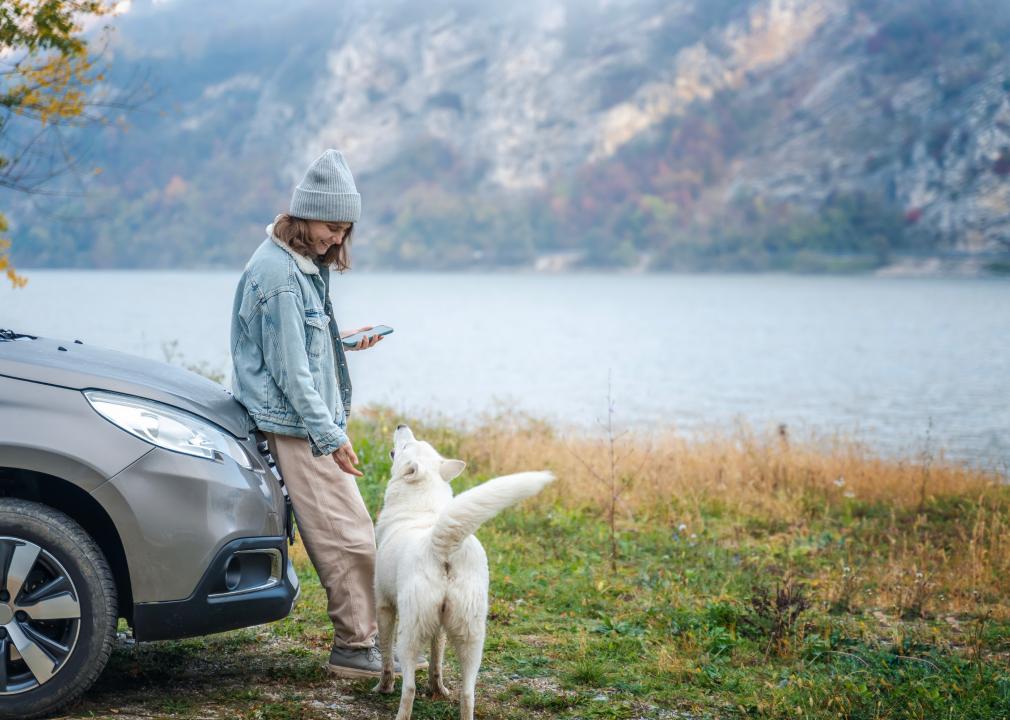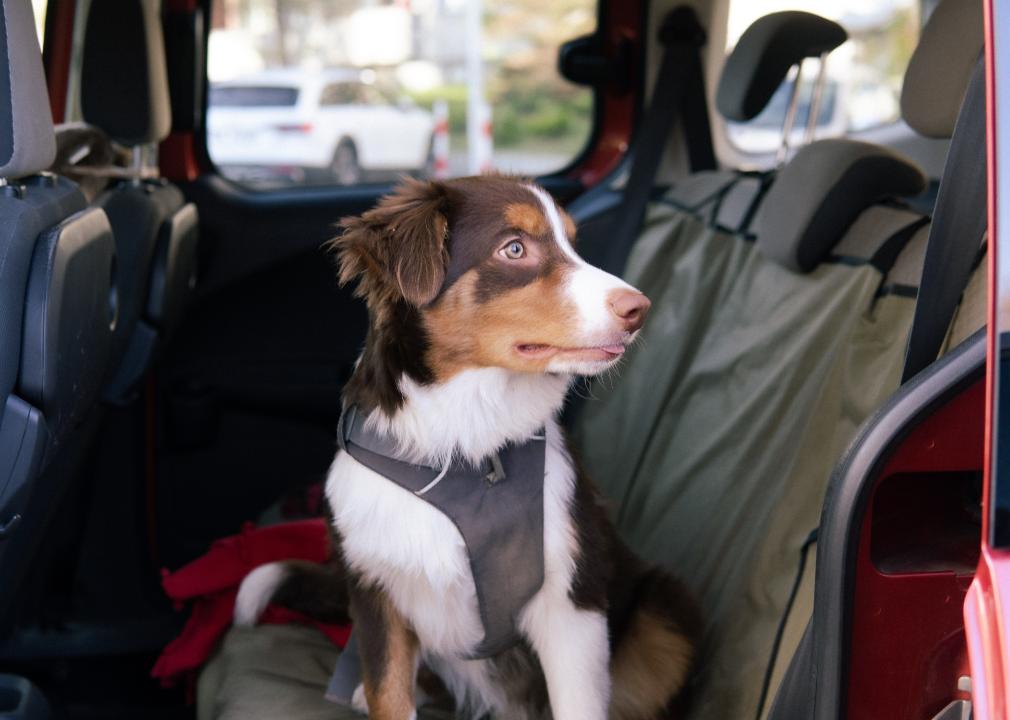The do's and don'ts of taking pets on the road
ORION PRODUCTION // Shutterstock
The do’s and don’ts of taking pets on the road
A family and a Labrador dog sitting in a car.
Road trips are more popular than ever—and travelers often have a four-legged family member (or two!) along for the ride.
Over the Fourth of July weekend this summer, AAA estimated that more than 60 million Americans drove to their vacation destinations, a new record for travelers hitting the road during the holiday.
At the same time, Americans are forgoing leaving their pets at home. This may be in part because families simply have more fur babies than at any time over the past few years. Two-thirds of American households have a pet, according to the American Pet Products Association, an increase from 56% since 1988. That’s a lot of new animals to figure out how to transport: Delta Air Lines estimates that half a million nonservice animal pets ride on board annually.
If you’re thinking of hitting the road for Labor Day weekend, CitizenShipper compiled a list of five do’s and don’ts for traveling on the road with your pet, compiled from animal medical caretakers and travel authorities like VCA Animal Hospitals, Animal Hospital of Howard, and AAA. These tips apply to cats and dogs specifically.
Pets have many of the same considerations as you do to stay comfortable, so plan ahead for when they’re hungry or thirsty, need sleep and bathroom breaks, and time to stretch their legs. Some recommendations are probably similar to precautions one would take with a toddler: Don’t let them sit in the front seat and plan for them to get restless and antsy, for example. In general, owners should always plan to pack their animal’s vaccination certifications, medications, regular food, identification, and some cleanup supplies, at minimum.
Read on to learn the biggest do’s and don’ts when it comes to making memories on the road with your favorite four-legged family members.
![]()
Varavin88 // Shutterstock
Do plan ahead for food and meal times
Cat in a carrier on a back seat of modern car.
While we might enjoy snacking on the road, our pets can’t. Animals are susceptible to car sickness, so it’s not advisable to feed them in a moving car. Plan for them to eat four to six hours before leaving, not right before departing. An empty stomach can help alleviate nausea and vomiting.
Make sure the food you bring is properly stored and placed in a cool, dry place so it doesn’t go bad on the road. This can mean bringing a small cooler to preserve opened canned wet food and Tupperware for dry food. It can also be a good idea to bring a few snacks along in case your pet needs calming down.
Water, however, is not only acceptable but important to provide plentifully. Some water in different parts of the country have different minerals that can upset an animal’s already sensitive stomach, so it may be wise to bring water from home.
Jaromir Chalabala // Shutterstock
Do be overcautious when it comes to safety
Labrador retriever looking through window on road.
Long road trips can present hazards that aren’t a worry at home. Even if they’re usually well-behaved, pets can be anxious in a new place, causing them to run away searching for home. Cats may hide if they’re stressed; dogs could jump out of a window that’s rolled down too far. They may become anxious with unfamiliar surroundings and scents, so make sure that you keep a close eye so they don’t dart away or accidentally get lost when they become confused or panicked.
To prepare for these risks, always put your pet’s identification collar on them while traveling. Engage your car’s child locks, and don’t let your pet in the front seat.
africa_pink // Shutterstock
Don’t stress out your pet
A couple traveling with a cat on a car trip.
Traveling can be extremely anxiety-inducing for animals; there are different stimuli to take in and get used to every time you stop somewhere new. A comfort object, such as a beloved toy or stuffed animal, can help soothe them along the way. You could also make a safe space in a corner of the car with blankets or a bed from home—anything familiar can make all the difference. You may even want to consider a pheromone collar or anti-anxiety medication if your pet particularly struggles with new environments.
Before attempting a long road trip, take your pet on smaller trips to acclimate them to traveling by car. It may also help to play calming music along the drive, but don’t blast your favorite tunes or podcasts too loudly, as this might further distress your four-legged friend.
Olezzo // Shutterstock
Don’t wait to take bathroom breaks
Young woman standing next to a car with a white shepherd dog on the shore of a mountain lake.
Don’t leave your pet suffering in silence—it’s best to pre-plan and time bathroom breaks to prevent accidents. Take your pet to the bathroom just before departing in the car to set them up for success from the start.
Puppies need to use the bathroom at least once an hour, while mature dogs need it more like every four hours. It all depends on your knowledge of your pet; after all, no one knows them better than you. If you have a feline, make sure you have a full and fresh litter box in the car. Packing a top-entry one is essential to avoid a spill when you hit a pothole.
Kamil Zajaczkowski // Shutterstock
Do give your pets enough time to stretch their legs
A border collie in the back of a car.
Animals are antsy and usually can’t go too long in a cramped car. For dogs, plan to stop every two to three hours to let them run around in a safe park area (though some experts advise every hour, while others say every four).
At the same time, make sure not to overdo it; stopping too many times means an overload of new smells, sights, and environments, which can quickly become stressful for your pet. When you do stop, never leave pets unattended. Temperatures inside cars exceed outside weather and can potentially cause heatstroke. Beloved pets can also be stolen if your parked car only has your furry friend to stand guard.
Before hitting the road again, take your dog on a short walk or play with your cat. Tiring them out can help minimize their restlessness.
Story editing by Carren Jao. Copy editing by Tim Bruns. Photo selection by Clarese Moller.
This story originally appeared on CitizenShipper and was produced and distributed in partnership with Stacker Studio.
